When and how to water beets with salt water to keep them sweet
It is widely believed among seasoned gardeners that watering beets with salt water increases the sugar content of root crops. But the secrets of a good harvest are not only this. Knowing what and how to feed beets will affect not only its taste, but also the size and keeping quality of vegetables.
Why water beets with salt water?
Fertilizing crops is the introduction of nutrients (fertilizers) during the growing season. Most often, mineral mixtures are dissolved in irrigation water and liquid fertilizing is carried out. So the plants get what they need as soon as possible.
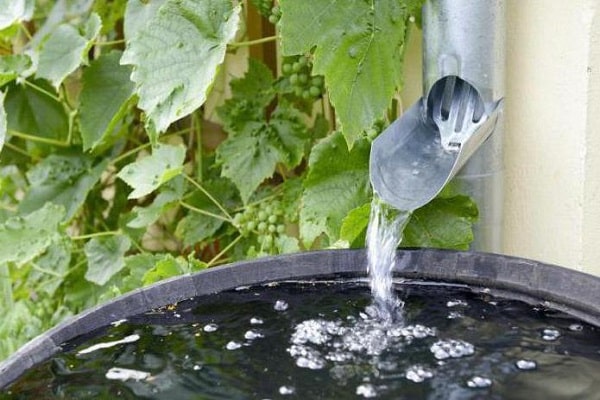
The feeding method, according to which you need to water the beets with salt water, is based on the increased demand of the crop for sodium. This element is rarely in sufficient quantities in soil with a heavy and dense structure, therefore, for many gardeners in central Russia, the crop does not give the best harvest.
Growing beets: watering with salt water
By watering the plants with salted water 2-3 times per season, the vegetable grower introduces the necessary amount of a microelement useful for them into the soil. But when carrying out such feeding, it is important not to overdo it, otherwise, instead of sweet vegetables, you can get the opposite result. An excess of any fertilizer for beets harmful, so you need to learn how to determine how many times to feed the culture and which solution is suitable for the conditions on the site.
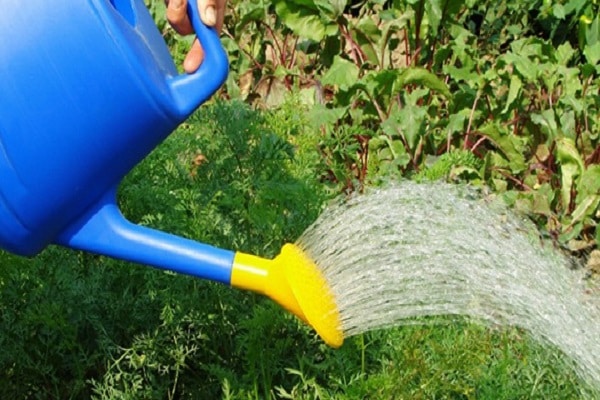
What are the watering rates?
It is easiest to determine the plant's need for sodium, boron, potassium and other trace elements by its appearance. When beets are deficient in nutrients, the leaves become small, flat and red in color. In a vegetable in a normal state, the leaf blade is large, slightly wavy, of a rich green color. Depending on the variety, only the leaf petiole or also the veins can be red.
You can feed the garden with root crops with special complex fertilizers for beets. The manufacturer indicates the proportions in the instructions for the preparation.
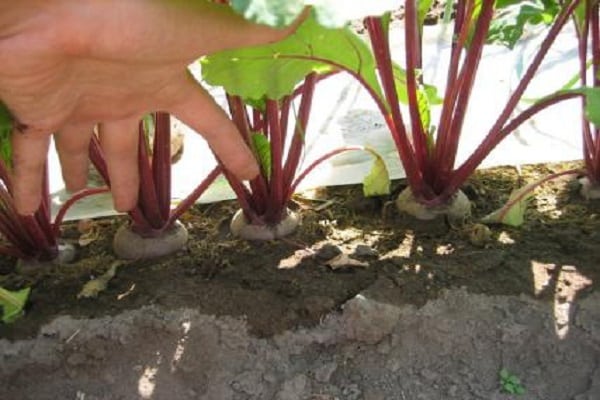
When watering plants with salt water, the proportions can be determined independently:
- if the beets have a healthy look, then 1 tsp. table salt is dissolved in 10 liters of warm water and this amount of liquid is poured over 1 m²;
- with reddening of the leaves, the dose of salt is increased to 2 tbsp. l. per 10 liters and per 1 m², focusing on the severity of the lack of trace elements.
Salt does not dissolve in water too quickly, and when watering beets, it is important to prevent crystals of the substance from getting on the roots.Too high a concentration of the solution makes it dangerous for a young plant. Wait until all the salt dissolves in the water before watering. The infusion time of the solution can be up to 10 minutes.
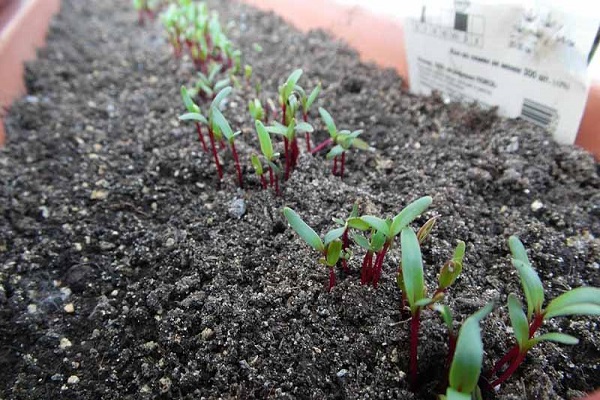
Watering recommendations
So that in summer and winter there are delicious homemade beetroot vinaigrettes on the table, beetroot feeding is combined with the correct watering regime:
- until shoots appear, the soil must remain moist constantly;
- young seedlings are watered as the top layer of soil dries up to 0.5-1 cm in depth;
- when an outlet of 4-6 leaves appears, the first feeding is carried out with a solution of sodium chloride in a minimum dosage (1 tsp. per 10 liters per 1 m²);
- as the plants grow, it should be taken into account that the root crop only accumulates nutrients and moisture, and absorption occurs at a depth of 10-15 cm, so the soil must be soaked to this depth, pouring 2-3 buckets of water per 1 m²;
- when the diameter of the root crop reaches 5-6 cm, dissolve salt, boric acid and ash infusion in water, pour (how to water and how much to take is indicated below).
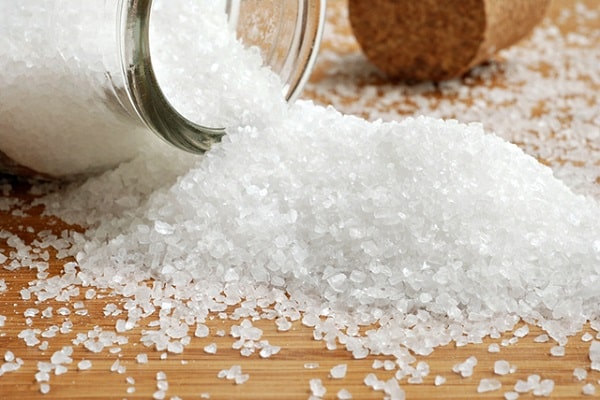
If the amount of precipitation is low, the beets will have to be watered every 3-5 days in order to maintain a sufficient amount of moisture in the soil. If the leaves start to turn red again, additional salt and ash may be needed.
In addition to watering, there is another method of processing - foliar feeding. Plants can be enriched with the substances they need by spraying the aboveground part with the indicated solutions. Spraying is also used for the prevention of beet diseases.
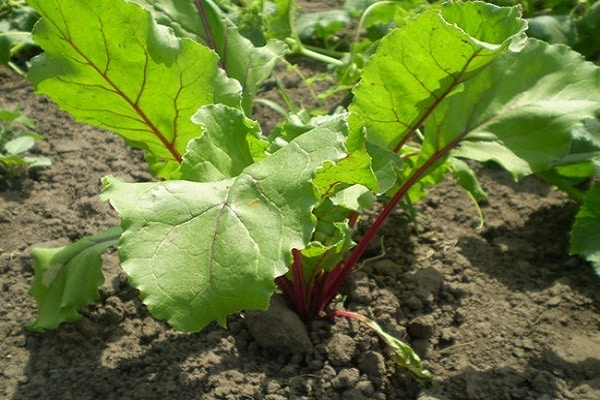
We increase the sugar content in another way
In addition to salt treatment of beets, boron, potassium and phosphorus are often required. To enrich the soil with boron, 10 g of boric fertilizers (borax, boric acid, Kemira-lux and others) must be dissolved in 10 liters of water. Wood ash also helps to enrich the soil with microelements. Sift it, pour 300-500 g of powder in 1 liter of water and let the mixture stand for 24-36 hours.
Mix the resulting solution with 10 liters of water and pour the liquid over 1 m² of beet beds. Treatments can be repeated after 3-5 days until a visible result is obtained - the leaves acquire a normal appearance.
To enrich the soil with potassium and phosphorus, necessary for the formation of a root crop and the accumulation of sugary substances in it, complex fertilizers are used (Agricola-4, Kemira, and others). You can take potassium monophosphate (1 tbsp. L. Per 10 liters of water), mix superphosphate 1-2 tbsp. l. and 1-2 tsp. potassium chloride or 1 tsp. potassium nitrate in 10 liters of water. A slight excess of these elements will not harm the beets, the plant will take only what it needs.

Reasons why beets can grow unpalatable
For the sweetness of beetroot, not only watering and feeding are important. Plants absorb nutrients poorly if the soil is acidic or waterlogged (in swampy areas). Under unfavorable conditions, root vegetables grow ugly, may crack or form voids inside, and their structure becomes fibrous.
If a vegetable grower has such problems from year to year, then it is not a bad variety or improper planting care. Soil is simply not suitable for beets. It can be improved by adding lime materials (fluff, chalk, dolomite or marble dust) and sand.

These measures reduce the acidity of the soil and make it looser. For 1 m², you will need up to 1 bucket of sand (fine and without clay) and 1-1.5 kg of lime. To enrich the soil with nitrogenous substances necessary for the growth of beets, 1 bucket of last year's humus is additionally introduced.
Sawdust (not shavings) will help make the soil loose. If the farm has poultry or pigs, then sawdust can be used as bedding, and after the manure has rotted, fill the soil in the beds with this humus.In the absence of livestock, the sawdust can be piled up, moistened and left to re-heat for 1 year.

Root crop development is often hampered by pests and diseases. Spraying the leaves with a strong salt solution (2 tablespoons per 10 liters of water) often helps to get rid of leaf-gnawing insects, fungi and bacteria. When processing, you should try to moisten both the underside of the leaf blade and the soil around the plants.
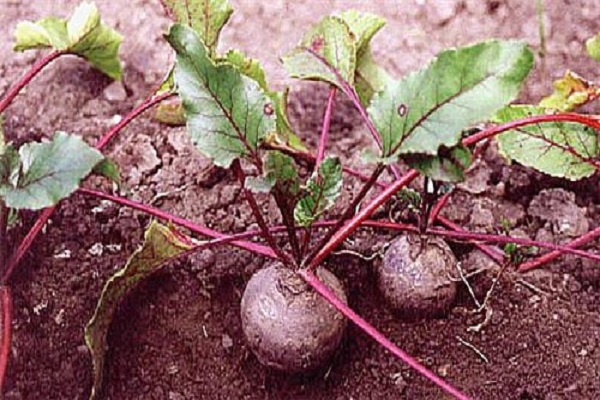




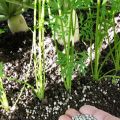



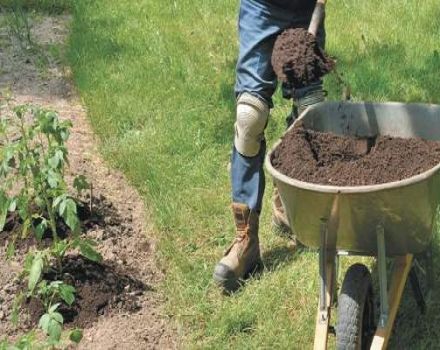

I agree with the content of the article. Our beets were small and not sweet, only last year they guessed to add additives to the soil in order to lower the acidity. And then salt water is also needed, it turns out! I will definitely try this. The leaves also turn black and holes appear on them, although there are no visible pests. What could it be?